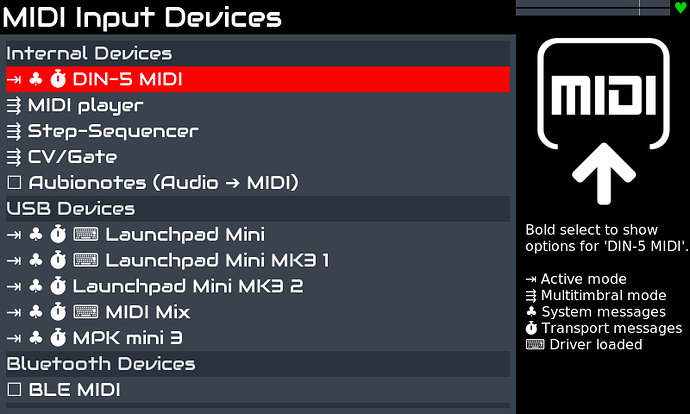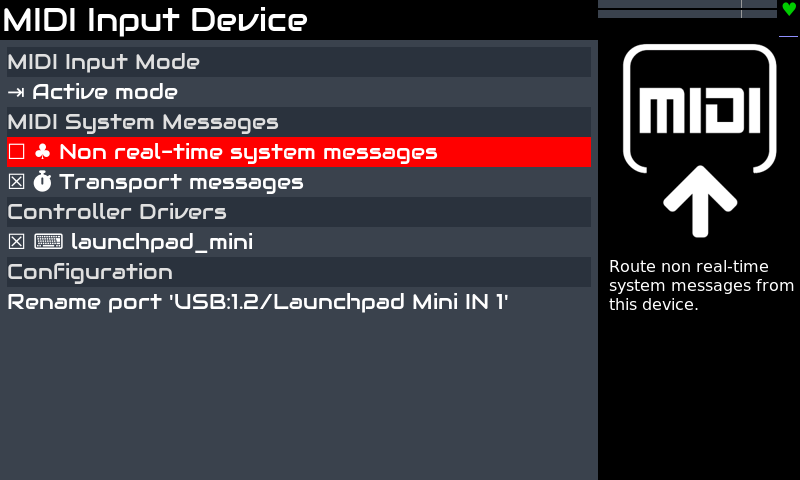I’m in the middle of an appraisal of my current set up and have a few Zynthian midi handling questions.
External clock - is it possible to choose (or filter the unwanted) external clock source used by Zynthian?
I’m using a controller keyboard (with master clock) connected to Zynthian via usb, and currently have a second USB synth connected, which receives clock (for arps, bpm delays, etc) through Zynthian. I don’t appear to be able to turn off transmitted clock from this, so Zynthian is receiving 2 clock signals. If I set the tempo to 120bpm on the keyboard, the tempo in Zynthian is 240bpm.
I’ve tried deselecting the 2nd device from any chain inputs, but this doesn’t affect the clock (I don’t think it should anyway)
System Realtime - Transport
I can see in webconf this is an option to enable, and recall from another thread that it may only effective be when Zynthian clock is Internal, but I’m not 100% what it does.
Does it enable the transmit of midi Sysex ‘start/stop/continue’ messages when buttons on the Zynthian are pressed?
I only have a touch screen + external controller, and at last attempt didn’t have any joy starting playback of external devices, but could have another go if I had a better idea of what I was looking for.
On the same subject, could this work with an external clock source, and/or could the start/stop midi messages be triggered via CUIA. e.g Master keyboard with clock source and transport controls configured to trigger CUIA start/stop function as per the Korg NanoKontrol2 control device, but Zynthian also sends out the corresponding system realtime start/stop midi message (to start a external hardware sequencer or drum machine for example) - I have attempted to do this within a ctrldev driver, but not been successful so far. (Not sure if that’s down to my poor coding or the way sysex might be implemented)
Alternatively, could Zynthian be configured to respond to start/stop system realtime? (even if it is just within a ctrldev driver)
Midi Chains - A little while ago there was mention in a thread (regarding a Mackie control driver), about possible changes to chain handling, it was implied that the changes may include some midi control i.e. volume from the mixer screen, I was curious if this still an intended future feature?
Apologies if any of these are explained in the documentation/elsewhere on the forum which I’ve missed.

